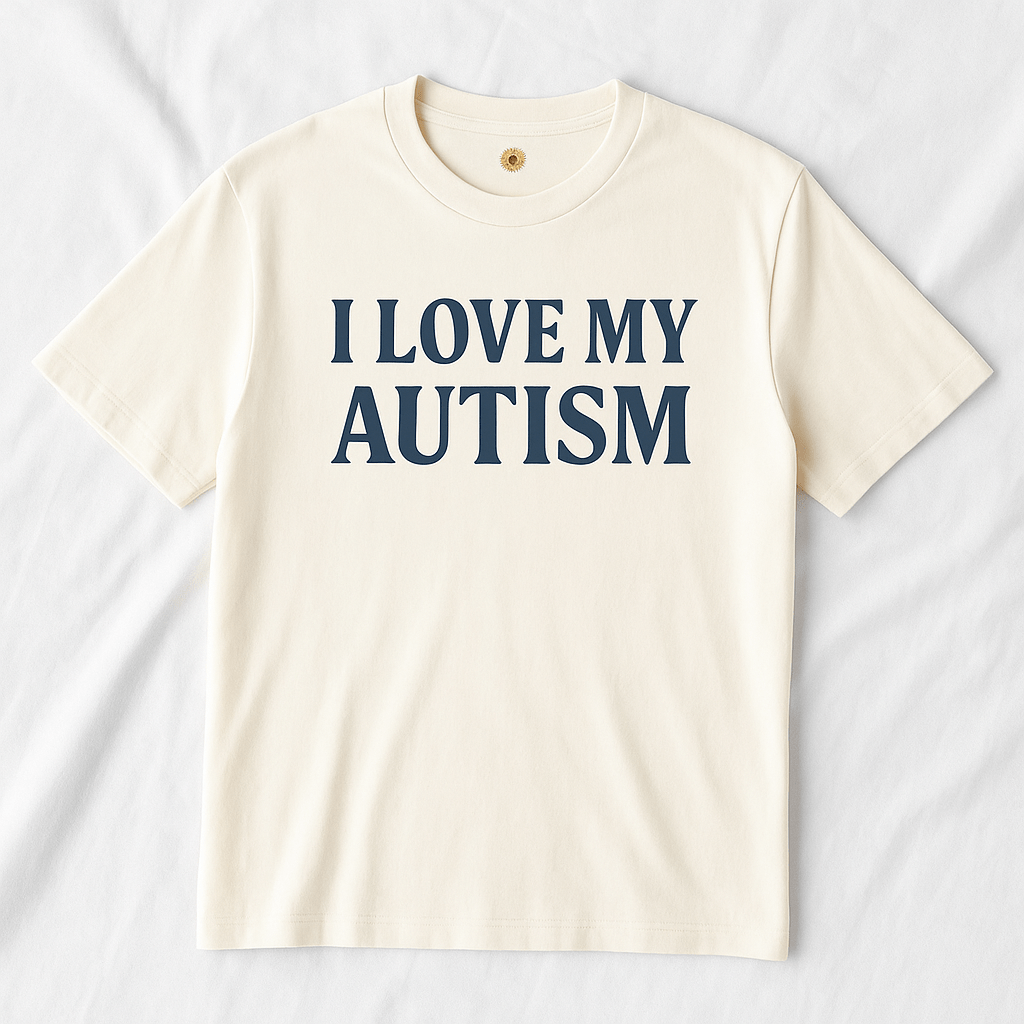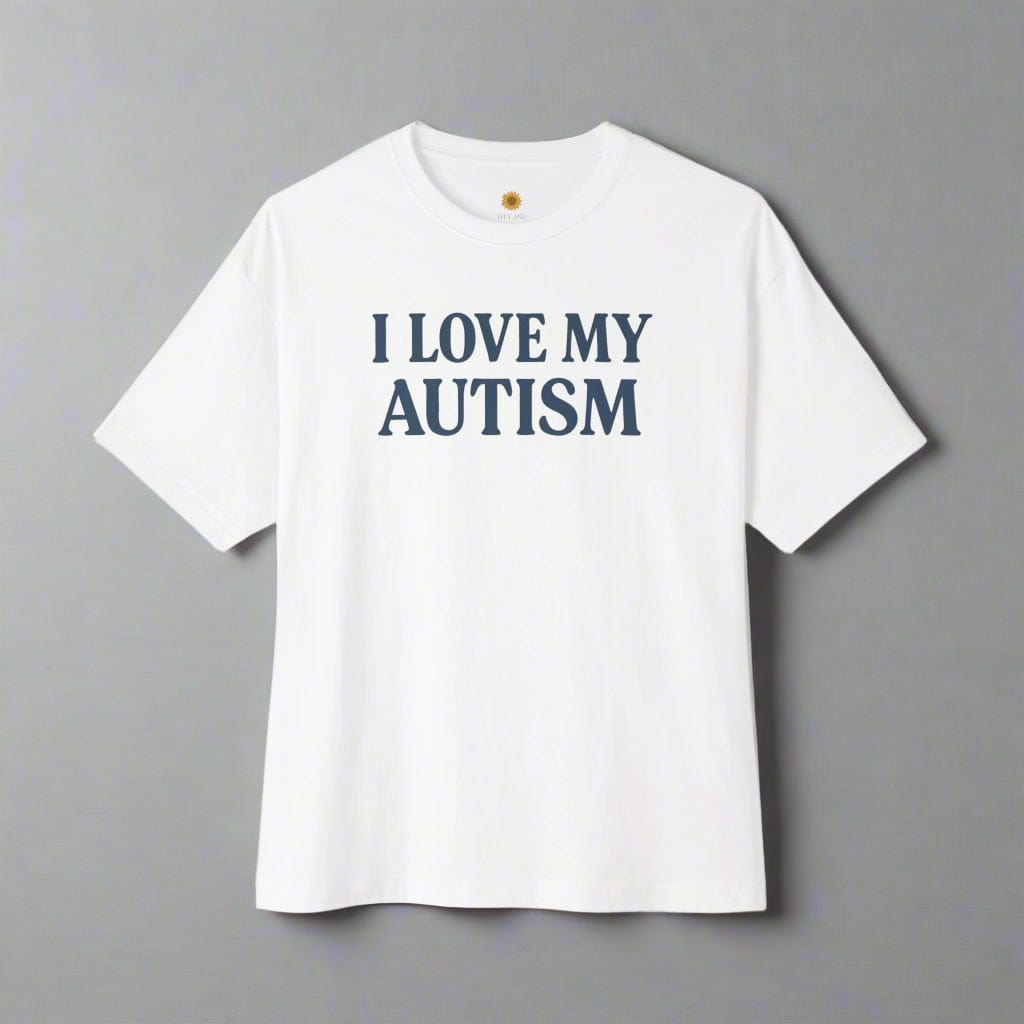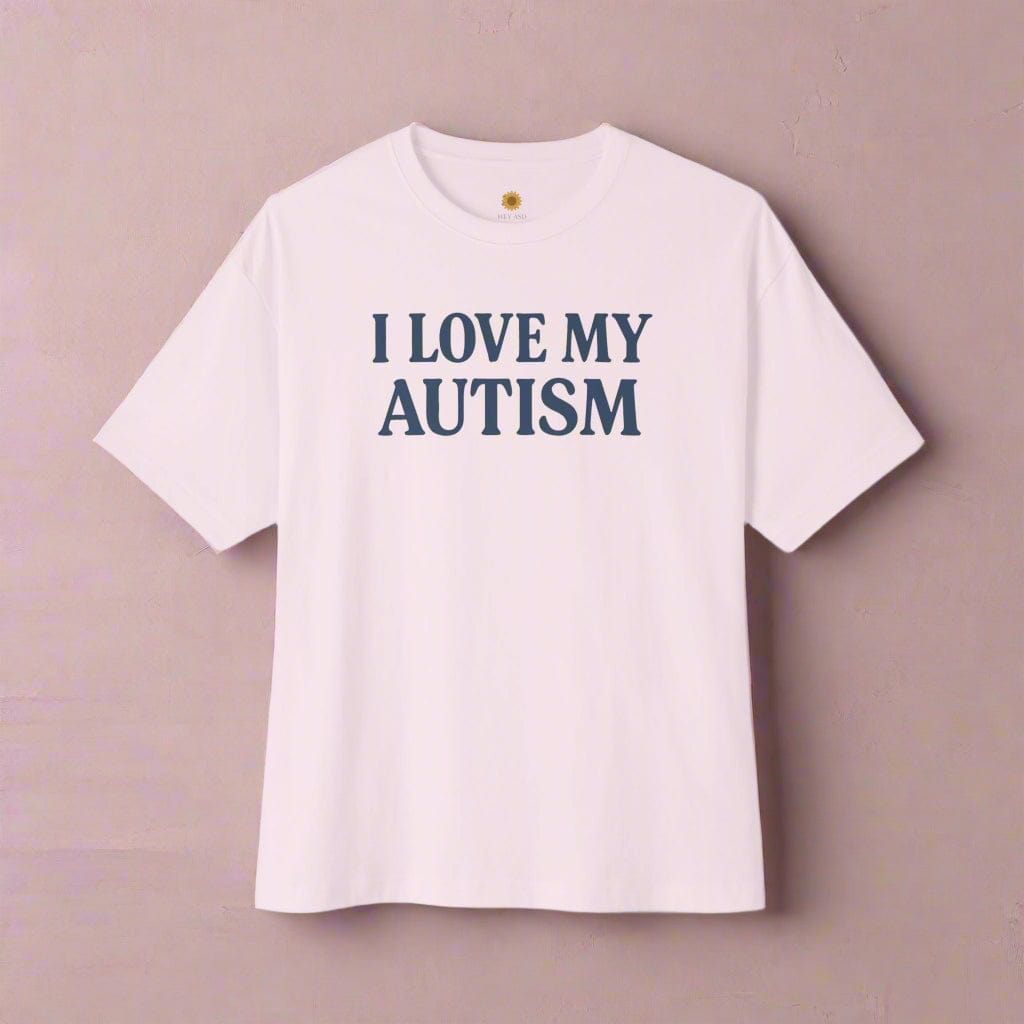ABA Therapy & Autism: Understanding Methods, Success Stories, and Modern Perspectives

Written by the HeyASD Editorial Team
Navigating therapy options for an autistic child—or for yourself—can feel overwhelming. One approach often discussed is Applied Behavior Analysis (ABA), a therapy designed to teach everyday skills and encourage positive behaviors.
Over the decades, ABA has evolved—from its highly structured beginnings to a more flexible, play-based, and compassionate practice. Yet it remains a topic of conversation and, at times, controversy within the autism community.
This guide takes a balanced, evidence-informed look at ABA therapy: how it works, its successes, its criticisms, and how it continues to change. Whether you’re a parent exploring options or an autistic adult reflecting on your own experiences, our aim is to help you make informed, values-aligned choices rooted in respect, autonomy, and understanding.
ABA Therapy and Autism: Introduction to Methods and Perspectives
When you're looking into support for an autistic loved one, you'll likely come across ABA therapy. It's a well-known approach for autism spectrum disorder, practiced by trained ABA therapists and behavior analysts. The main goal is to help individuals learn new skills and reduce behaviors that may be challenging.
This therapy is a type of early intervention that can be an effective treatment for some. We will explore what ABA is, its scientific roots, and how it is practiced today.
ABA Therapy: What Is It and What Does It Stand For?
ABA stands for Applied Behavior Analysis. In simple terms, it's a therapy based on the science of learning and behavior. The main goal is to understand how behavior works, how it's affected by the environment, and how learning takes place. It focuses on increasing helpful behaviors and decreasing behaviors that get in the way of learning or safety.
The core idea is that when a behavior is followed by something rewarding, that behavior is more likely to happen again. This process is used to teach new skills and address a target behavior. ABA aims for positive behavior change by breaking down skills into small, manageable steps and rewarding progress.
ABA therapists work to find out why problem behaviors occur and then teach a different, more effective way to get needs met. The focus is always on creating meaningful and positive behavior change that helps the person in their daily life.
How ABA Therapy Evolved: History and Scientific Foundations
"When I was a child in ABA, I learned valuable routines—but I also wish my feelings had been part of the lesson plan. The best support I found later was when someone asked what felt safe for me."
The field of ABA has a long history with deep scientific foundations in behavioral analysis. It started in the 1960s with Dr. O. Ivar Lovaas, and early programs looked very different from today's practices. The initial methods were highly structured and sometimes used punishment, which is no longer an acceptable practice.
Over the decades, ABA has evolved. A Board Certified Behavior Analyst (BCBA) today uses a much more compassionate and play-based approach. The therapy for developmental disabilities has shifted to focus on a person's interests and motivations to guide learning.
Modern ABA is built on a foundation of scientific research, but it continues to change. The focus is now on what is socially significant for the person, meaning it helps their safety and learning in a way that respects who they are. The duration of therapy varies for each child, depending on their unique needs and how quickly they progress.
Who Benefits from ABA Therapy for ASD?
ABA therapy is often recommended for autistic people, especially young children. It can be a very effective form of early intervention for those with developmental disorders. The therapy is designed to be personalized, so it can be adapted to fit a wide range of needs and abilities.
The main benefits often seen are improvements in key life areas. These can include:
-
Developing communication and social skills.
-
Learning new daily living skills, like getting dressed or brushing teeth.
-
Improving the ability to interact with others and make eye contact, if that is a personal goal.
Studies have shown that intensive ABA at a young age can lead to significant gains in development. It's designed to support children on the autism spectrum by teaching them skills that can help them navigate their world more easily and increase their independence.
The Main Goals and Principles of ABA Behavior Therapy
The primary goal of ABA therapy is to help individuals build skills that improve their quality of life. A behavior analyst works to understand a person's strengths and challenges to create a plan that fosters positive behaviors. The focus is on teaching new skills, not just reducing unwanted ones.
The core principles of ABA involve observing behavior, understanding its function, and using reinforcement to encourage desired actions. The ultimate aim is to empower individuals with the tools they need to communicate, learn, and engage with their environment in effective ways.
Building Communication, Social, and Daily Living Skills
A major focus of ABA is skill acquisition in areas that are central to everyday life. Therapists work on building essential skills that help autistic people express themselves, connect with others, and gain independence. This is done by breaking down complex goals into smaller, achievable steps.
Common areas of focus include:
-
Communication skills: Learning to use words, signs, or pictures to ask for things or share feelings.
-
Social skills: Understanding social cues, taking turns in conversation, and participating in group activities.
-
Daily living skills: Mastering tasks like personal hygiene, chores, and safety routines.
-
Play and leisure skills: Developing hobbies and learning how to engage in play with others.
By targeting these areas, ABA aims to improve social interactions and give individuals the confidence to navigate different situations. The goal is to build a foundation of skills that can be used for a lifetime, promoting greater independence and connection.
Understanding Reinforcement in ABA Therapies
Reinforcement is a cornerstone of ABA therapy. It’s the process of encouraging specific behaviors to make them more likely to happen in the future. The most common type used is positive reinforcement. This means that when a desired behavior occurs, the person receives something they value, like praise, a toy, or a fun activity.
This approach helps create a positive learning environment. Instead of focusing on what not to do, the emphasis is on what to do. For example, if a child is learning to ask for a toy instead of grabbing it, they are praised and given the toy immediately after they ask. This powerful connection helps a behavior change stick.
It’s important to understand that reinforcement is not bribery. Bribery happens in the middle of a challenging behavior to make it stop. Reinforcement is planned ahead of time to reward a positive choice. It is a teaching tool that builds motivation and helps individuals learn effective ways to interact with their world.
Essential Concepts Behind ABA Sessions
An ABA session is built on several key concepts that guide the therapist's work. The process begins with a thorough assessment to identify a person's unique strengths and needs. From there, the behavior analyst develops a personalized plan with clear goals.
The plan outlines specific intervention strategies to teach new skills and address a target behavior. These strategies are evidence-based and designed to be as effective as possible. Central to this process is ongoing data collection. Therapists carefully track progress to see what’s working and what isn’t.
Essential elements of ABA planning include:
-
Defining a target behavior: Clearly identifying the skill to be learned or the behavior to be changed.
-
Choosing intervention strategies: Selecting the right techniques to teach the new skill.
-
Consistent data collection: Measuring progress to ensure the plan is effective and making adjustments as needed.
These concepts ensure that ABA therapy is a systematic and goal-oriented process, tailored to find the most effective ways to support each person.
What a Typical ABA Therapy Session Looks Like
Imagining an ABA session can be tricky, as they are highly customized. A session is led by a trained therapist or behavior analyst and follows the individual's treatment plan. The environment might be a clinic, your home, or even a school, depending on the goals. The focus is on creating opportunities for learning and skill acquisition.
Therapy sessions often mix structured activities with more natural, play-based learning. The therapist uses positive reinforcement to keep the person motivated and engaged. Below, we'll explore what activities and interventions you might see.
Step-by-Step Flow: Activities and Interventions
An ABA intervention is not a one-size-fits-all process. The flow of therapy sessions is dynamic and follows the person's lead and energy levels. It often starts with building a positive relationship between the therapist and the individual, known as pairing. This ensures the person feels comfortable and trusts the therapist.
Activities are chosen based on the goals in the treatment plan. A therapist might use discrete trial training (DTT) for teaching a specific skill, which involves a clear instruction, a prompt if needed, and a reward. They might also use naturalistic teaching, where learning happens during play or daily routines. Effective interventions are seamless and fun. The goal is to practice skills in a way that feels engaging, not like work. Behavior management strategies are used compassionately to help redirect and teach alternative behaviors.
|
Session Component |
Description |
|---|---|
|
Pairing |
The therapist builds rapport and becomes a source of positive reinforcement. |
|
Skill Building |
Activities are used to teach new skills, like communication or social turn-taking. |
|
Data Collection |
The therapist records responses to track progress toward a goal. |
|
Generalization |
The therapist helps the person practice the new skill in different settings or with different people. |
Customizing Goals for Children and Youth
One of the most important aspects of ABA is that it is not a rigid program. Every treatment plan is uniquely designed to fit a child’s needs, strengths, and family values. A behavior analyst will conduct an initial assessment to understand what skills are most important for your child to learn to improve their everyday life.
These goals are not just about behavior. They focus on meaningful skill acquisition, such as learning to communicate wants and needs, making friends, or completing daily routines independently. The goals are broken down into small, achievable steps, so your child can experience success and build confidence.
As your child masters these new skills, the goals evolve. The treatment plan is a living document that is updated regularly to reflect your child's progress and changing priorities. This customization ensures the therapy remains relevant and continues to support your child's growth in a way that truly matters to them and your family.
###
Data Collection and Tracking Progress in ABA Therapy
A key feature that sets ABA apart is its focus on data collection and tracking progress. Therapists don't just guess if a child is learning; they measure it. During every session, the therapist collects data on how the child responds to teaching, whether they are learning a target behavior, and how often they are using their new skills.
This information is crucial for making decisions about ABA programs. By analyzing the data, a behavior analyst can see which teaching strategies are working and which ones need to be adjusted. This objective feedback ensures that the therapy is effective and that the child is continuously moving forward. Thinking about how to find a good provider? A qualified therapist will always be transparent about their data collection methods.
Data collection in ABA services typically involves:
-
Recording correct and incorrect responses.
-
Measuring how long a behavior lasts.
-
Tracking how often a new skill is used without prompting.
This commitment to data helps ensure that therapy time is productive and focused on achieving positive outcomes.
Common Techniques Used in ABA Therapy for Autism
ABA is an umbrella term that includes a variety of techniques and intervention strategies. A therapist will choose the best methods based on the person's learning style and specific goals. These techniques are designed to break down learning into understandable parts and use positive reinforcement to build motivation.
From highly structured methods like discrete trial training to more play-based approaches, the therapist considers all environmental variables to create the best learning conditions. These strategies are all rooted in the science of behavior and learning.
Discrete Trial Training and Natural Environment Teaching
Two of the most well-known ABA techniques are Discrete Trial Training (DTT) and Natural Environment Teaching (NET). While they are different, both are effective interventions for teaching new skills.
DTT is a structured, one-on-one teaching method. It breaks skills into small, "discrete" trials. Each trial has a distinct beginning and end, and a correct response is followed by positive reinforcement. It's often used for skills that require repetition, like learning letters or colors. While it can be very effective, it is just one part of a comprehensive ABA program.
NET, on the other hand, takes place in the person's everyday environment. The therapist uses the person's interests to guide the session. Key differences include:
-
Structure: DTT is therapist-led and structured, while NET is child-led and more fluid.
-
Reinforcement: In DTT, the reward might be separate from the task. In NET, the reinforcement is directly related to the activity (e.g., getting to play with a toy after naming it).
-
Setting: DTT often occurs at a table, while NET happens during play or daily routines, helping to generalize skills and reduce challenging behavior.
Task Analysis and Chaining Skills
For complex skills with multiple steps, like washing hands or making a sandwich, therapists use a technique called task analysis. A behavior analyst will break the skill down into small, manageable steps. This list of steps becomes a roadmap for teaching the entire routine.
Once the task is analyzed, the therapist uses "chaining" to teach the sequence. Chaining links the individual steps together to form a complete skill. There are a few ways to do this, and the therapist will choose the best approach for the learner.
-
Forward Chaining: The person learns the first step of the sequence. Once they master it, they learn the second step, and so on.
-
Backward Chaining: The therapist helps with all the steps except the last one, which the person does independently. This can be very motivating, as the person finishes the task themselves.
-
Total Task Chaining: The person is prompted through all the steps of the chain on every trial.
This method of skill acquisition is incredibly effective for teaching daily living skills and routines, promoting greater independence.
Visual Supports and Prompting Strategies
ABA therapy often uses visual supports and prompting to help teach new skills. These tools make learning clearer and reduce frustration. Visual supports can be pictures, checklists, or written schedules that show what is expected or what is coming next. They are especially helpful for language development and helping to manage transitions.
Prompting is a way therapists provide assistance to help a person perform a skill correctly. The goal is to provide just enough help to ensure success, and then gradually fade the prompt away so the person can do the skill on their own. This helps avoid errors and builds confidence.
There are different levels of prompts, including:
-
Verbal prompts: Giving a spoken clue.
-
Gestural prompts: Pointing or motioning.
-
Physical prompts: Gently guiding a person's hand.
Using these strategies can help reduce problem behaviors by making expectations clear and providing the right level of support for learning.
Real Stories: ABA Therapy Successes and Lived Experiences
Hearing about therapy in theory is one thing, but real-life stories bring the experience to light. Many families report positive outcomes and celebrate the new skills their children learn through ABA. These ABA success stories often highlight an improved quality of life, not just for the child but for the whole family.
It's important to remember that progress looks different for everyone. These stories of positive behaviors and a new sense of autism pride are powerful, but they are just one part of a larger conversation. Let's look at some examples of what success can look like.
Achieving Milestones: Positive Outcomes with ABA Therapy
For many families, ABA therapy leads to achieving important milestones. These positive outcomes are a direct result of consistent therapy and the use of positive reinforcement. The focus is on skill acquisition, helping autistic children learn new behaviors that open up their world.
Success might look like a non-speaking child learning to use an autism app to communicate their needs for the first time. It could be a child who struggled with social skills learning to play with a peer at the park. These new behaviors are more than just data points; they represent real growth and increased connection.
Some examples of celebrated milestones include:
-
A child learning to tolerate haircuts without distress.
-
A youth developing the social skills to join a club at school.
-
A child mastering their morning routine, giving them a sense of independence.
These achievements are often a result of breaking down big goals into small, successful steps, building confidence along the way.
Parents’ Voices: Celebrating Progress and Growth
"Seeing my son ask for help on his own for the first time was life-changing. ABA gave us tools, but compassion gave us connection."
Parents are often the biggest cheerleaders, celebrating progress that makes a real difference in everyday life. For many parents, seeing their child learn a new skill they’ve been working on for weeks is a moment of pure joy. These victories, big and small, are what keep families motivated and hopeful.
The journey isn't always easy, but parents often share stories of breakthroughs. It might be the first time their child spontaneously uses a new word, or the day they see them share a toy without prompting. These moments of growth in positive behaviors show that the hard work and support are paying off.
These celebrations are not about changing who a child is. They are about providing the tools and support needed to navigate a world that can be challenging. Parents find joy in seeing their child's confidence grow as they become more independent and capable in their daily lives.
Balancing Hope and Realistic Expectations
While celebrating progress is vital, it's also important for families to balance hope with realistic expectations. ABA is a support tool, not a "cure." The goal is to improve quality of life and build skills, not to make an autistic person appear non-autistic. Every person's journey is unique, and progress will happen at its own pace.
Setting realistic goals with your therapy team is a crucial next step. A good therapist will help you understand what is achievable and what success might look like for your child. It’s about focusing on meaningful, positive behaviors that enhance your child's well-being and independence, not chasing an unrealistic ideal.
It's also important to be mindful of mental health, for both your child and yourself. Autistic burnout is real, and pushing too hard can be counterproductive. The best approach is a partnership with your provider, focusing on compassionate, sustainable growth that respects your child's capacity and honors their identity.
Transitioning Support: ABA Therapy from Youth into Adulthood
As autistic children grow into teenagers and young adults, their support needs change. ABA therapy for autistic adults looks very different from early intervention. The focus shifts from foundational skills to those needed for independence, self-advocacy, and navigating the complexities of adult life.
This transition is a critical next step. It involves helping the person identify their own goals and building the skills to pursue them. The aim is to empower them to lead a fulfilling life on their own terms.
Shifting Focus: Promoting Independence and Self-Advocacy
As autistic people transition into adulthood, the focus of ABA therapy naturally shifts. The goal of skill acquisition moves toward promoting independence and self-advocacy. This means teaching skills that are directly relevant to adult life, such as budgeting, job interviewing, or navigating public transportation.
Self-advocacy becomes a primary goal. This involves teaching individuals how to understand their own needs, communicate them clearly to others, and make their own choices. Therapists might work on scripts for requesting accommodations at work or college, or practice how to set boundaries in social situations.
The aim is to equip autistic young adults with the tools to take control of their own lives. Learning these new skills is about empowerment. It’s about ensuring they have the confidence and ability to live the adult life they choose, with the right supportspeasants in place.
Navigating New Challenges and Strengths After ABA
Moving into adult life after years of therapy brings new challenges and reveals new strengths. For some autistic adults, the highly structured support of ABA is no longer the right fit. The next step is learning to apply the skills they’ve learned to the unpredictable nature of adult life.
This transition can be a time to discover strengths that weren't the focus of therapy, like a deep passion for a specific topic or a unique way of solving problems. However, new challenges may also arise, such as managing autistic burnout or navigating complex social environments without a therapist's direct support. Effective behavior management becomes self-management.
Important areas to navigate include:
-
Finding a supportive community of other autistic adults.
-
Learning to manage sensory needs in new environments.
-
Building executive functioning skills for work or independent living.
-
Exploring identity and autism pride outside of a therapeutic context.
Resources for Autistic Adulthood and Next Steps
Finding the right resources is a crucial next step for autistic adults and their families. The journey doesn't end when therapy sessions do. Support in adulthood is often about finding community, practical tools, and information that promotes a high quality of life.
There are many organizations and online groups dedicated to supporting autistic adults. These can be great places to connect with peers, share experiences, and find information. Exploring your identity can also be a part of this journey, whether it's through learning about late-diagnosed autism or finding items like autism t-shirts or autism jewelry that express your pride. Finding a qualified therapist who specializes in autistic adults can also provide valuable support.
Helpful resources might include:
-
Vocational rehabilitation services for job support.
-
Independent living centers that offer skills training.
-
Online forums and social groups for autistic adults.
-
Our autism store at HeyASD for sensory blankets, autism hoodies and autism hats.
In addition to these supports, local disability advocacy organizations often host workshops, webinars, and events tailored specifically for autistic adults. These programs may focus on topics such as self-advocacy, navigating healthcare systems, financial planning, or housing options. Many universities and community colleges also have accessibility offices that provide accommodations and guidance for autistic students who wish to continue their education.
Technology can play an important role as well—there are a range of apps designed to help with organization, communication, or time management. For those looking to build social networks or find mentorship opportunities, platforms like Meetup or Facebook groups aimed at neurodiverse individuals can foster meaningful connections.
It’s also essential to consider mental health support beyond traditional therapy. Peer support groups—both in-person and virtual—allow autistic adults to share challenges and celebrate successes in an understanding environment. Some people find value in connecting with autistic-led organizations where leadership and programming reflect lived experience.
Ultimately, the best resources are those that align with an individual’s personal goals and needs—whether it’s developing independent living skills, preparing for employment, managing sensory sensitivities, or building a supportive social circle. Taking advantage of available tools empowers autistic adults to thrive throughout every stage of life.
Criticism, Controversy, and Listening to Autistic Voices
No discussion of ABA is complete without acknowledging the criticism and controversy surrounding it. Many autistic adults and advocates have spoken out against the therapy, sharing negative experiences and raising important concerns. Their voices are essential to understanding the full picture of ABA.
These critiques often center on the potential for harm, especially from older, more rigid forms of ABA. Concerns about mental health, a focus on compliance over understanding, and the pressure to hide autistic traits are common themes. Listening to these autistic voices is crucial for a more ethical and compassionate approach to support.
Core Concerns: Autonomy, Masking, and Burnout
"ABA taught me to look 'normal'—but at the cost of hiding who I was. Learning to unmask as an adult has been the real healing."
The central criticism padrões from the autistic community revolves around autonomy, masking, and burnout. Autonomy is the right to self-determination and to be in control of your own life and body. Critics argue that some ABA practices can undermine a person's autonomy by focusing on compliance and making them do things that feel unnatural or distressing.
"Masking" is the term for when an autistic person hides their natural traits (like stimming) to appear more "normal." Many autistic adults who went through older forms of ABA report that they were taught to mask, which led to long-term mental health issues and a feeling of being inauthentic. This constant effort can lead to autistic burnout, a state of profound exhaustion.
Core concerns include:
-
Lack of autonomy: Goals being chosen by therapists or parents, not the person themselves.
-
Forced masking: Teaching children to suppress natural behaviors, leading to identity issues.
-
Risk of burnout: The intensity of some ABA programs can be exhausting and cause long-term stress.
These concerns highlight the need to move away from approaches that prioritize changing problem behaviors over understanding the person's needs.
Newer Approaches: Consent, Collaboration, and Respect
"My therapist now asks for my input on every goal. That small act of respect changed everything—it made me want to learn, not just comply."
In response to these valid criticisms, the field of ABA is evolving. Many modern providers are embracing newer approaches that prioritize consent, collaboration, and respect. This shift represents a move toward more compassionate care that honors the identity of autistic people.
A consent-based model means that a person, including a child, has the right to say "no" to a task or activity. Therapists work to build trust and find ways to make learning enjoyable, rather than forcing compliance. Collaboration involves working with the autistic person and their family to set goals that are meaningful to them, not just goals that make them appear less autistic. Positive reinforcement is still used, but in a way that feels natural and affirming.
Key elements of these newer approaches include:
-
Assent/Consent: Honoring a person's "no" and respecting their bodily autonomy.
-
Collaborative goal-setting: Working with the individual to decide what they want to learn.
-
Trauma-informed practices: Recognizing that past negative experiences can impact learning.
This evolution is a positive step toward a more ethical and effective future for ABA.
Key Takeaways: ABA Therapy & Autism
- ABA therapy uses structured, evidence-based strategies to teach communication, self-care, and social skills through positive reinforcement.
- Modern ABA continues to evolve, moving away from compliance-focused models toward consent, collaboration, and respect for neurodiversity.
- Lived experience matters — listening to autistic adults helps shape more compassionate and effective therapy practices.
- Families and providers should prioritize autonomy, comfort, and emotional safety alongside skill development.
- Every autistic person deserves support that honors who they are — not just how they behave.
Conclusion: Supporting Growth with Compassion
ABA therapy has played a significant role in autism support for decades, helping many families build structure, communication, and connection. At the same time, it continues to evolve—shaped by new research, community feedback, and the lived experiences of autistic people themselves.
Today’s best practices center not just on behavior, but on well-being, autonomy, and respect. When families, practitioners, and autistic voices work together, therapy can become a space for growth that nurtures confidence rather than conformity.
If you’re considering ABA or any form of support, stay curious, ask questions, and trust your instincts. The goal isn’t to “fix” anyone—it’s to help each person thrive in a way that feels authentic, comfortable, and true to who they are.
At Hey ASD, we believe comfort and self-acceptance are forms of empowerment. Explore our sensory-friendly clothing, calming décor, and inclusive designs created for—and by—the autism community.
Comfort and Understanding Belong Together
Explore sensory-friendly tees, calming home décor, and meaningful designs created for and by the autism community.
Explore the CollectionFrequently Asked Questions
How do I find a qualified ABA behavioral therapist in the United States?
To find a qualified provider, look for a Board Certified Behavior Analyst (BCBA). You can search the Behavior Analyst Certification Board (BACB) website for certified behavior analyst professionals in your area. Ask potential ABA therapists about their approach to ensure it aligns with your values for effective treatment and compassionate ABA services.
Are there any risks or downsides to ABA therapy for children?
Yes, there can be risks, especially with outdated or low-quality ABA therapy. Critics from the autistic community raise concerns about its potential to cause long-term mental health issues, encourage masking, and ignore a child's autonomy. It is vital to choose a behavior analyst who uses modern, consent-based practices to minimize these risks.
How does ABA therapy differ from other supports for autistic people?
ABA therapy is distinct from other supports because it is based on the principles of aba, focusing on behavior and learning. While other therapies like occupational or speech therapy target specific skills, ABA is a comprehensive approach that can be applied to many different goals in a highly structured, data-driven way.
What are the key principles of BA therapy and how do they apply to individuals with autism?
The key principles of ABA involve identifying how behavior is influenced by the environment and using positive reinforcement to encourage desired behavior change. For autistic people with developmental disabilities, this means breaking down skills into small steps and rewarding progress to teach specific behaviors, from communication to daily routines.
How does BA therapy differ from other therapeutic approaches used for autism?
BA therapy, or ABA, differs from other therapeutic approaches by its intensive focus on observable behavior and data. While therapies like speech or occupational therapy target specific domains, BA therapy uses intervention strategies to modify a wide range of target behaviors, from social skills to reducing problem behaviors, with constant progress tracking.
Can you share some success stories or case studies that highlight the effectiveness of ABA therapy in autism treatment?
Success stories of BA therapy often include children who learned to communicate their needs for the first time, leading to fewer meltdowns. Other case studies show positive outcomes like children developing friendships or mastering daily routines. These new skills are celebrated as significant steps toward greater independence and connection.
What are some common challenges faced when implementing BA therapy for autistic individuals, and how can they be overcome?
Common challenges in BA therapy include a lack of motivation, difficulty generalizing skills to new settings, and resistance to demands. These can be overcome with better intervention strategies, such as finding more powerful reinforcers, practicing skill acquisition in natural environments, and focusing on goals that improve the person's quality of life.





















